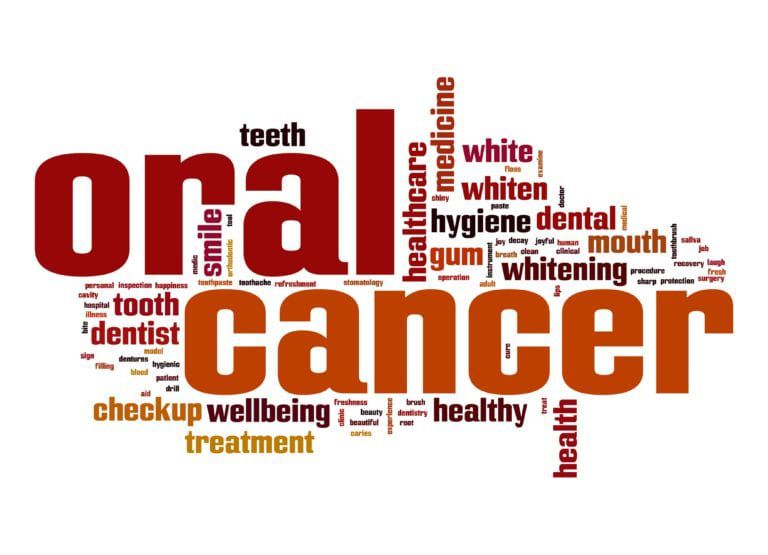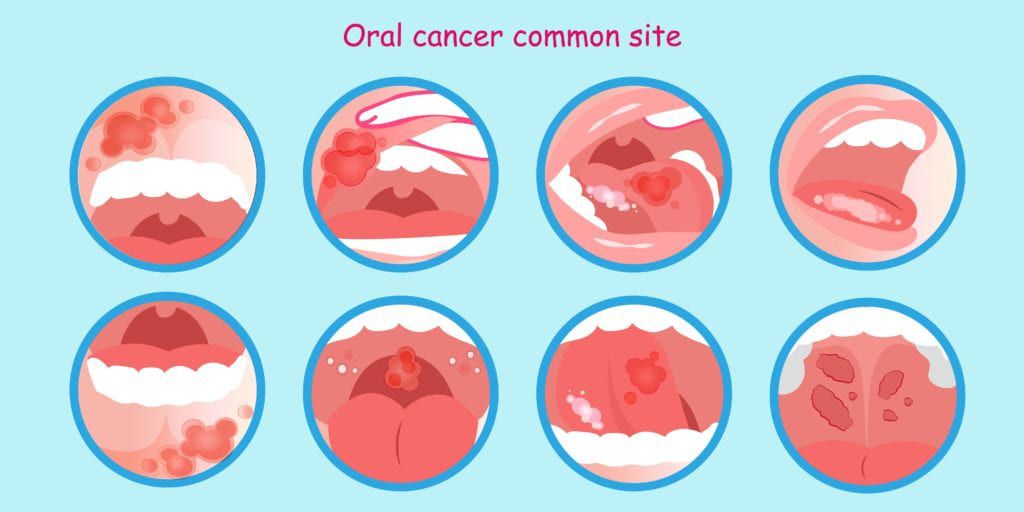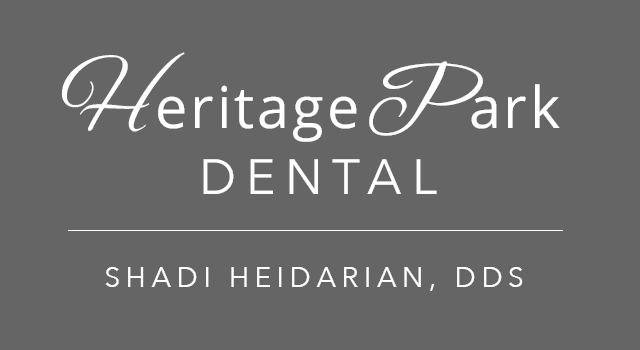Everything You Need to Know About Oral Cancer

Did you know that The Oral Cancer Foundation estimates that as of this year, 53,000 new cases of oral cancer will be diagnosed? In fact, the foundation also estimates that the number of cases diagnosed each year will continue to grow because of the disease’s risk factors and the fact that there is no national screening policy.
At Heritage Park Dental, we believe that our patients should always be informed about possible issues that can affect their oral and overall health. As such, we have compiled this guide detailing everything you and your family need to know about oral cancer.
To start off, oral cancer is an uncontrollable growth of cells in the oral and oropharyngeal regions. This overgrowth of cells often causes damage to the surrounding structures and tissues. It is important to note that the term “oral cancer” is actually used to describe a range of cancers that affect this particular region. Oral cancer can be any of the following cancers: tongue, mouth, lips, cheeks, hard or soft palate, sinuses, tonsils, or pharynx (throat).

The risk of developing oral cancer is highest in men over 50, but men of any age have twice the risk as women. The risk of developing oral cancer is further compounded by certain behaviors. For example, those who smoke (cigarette, cigar, or pipe) have six times the risk, those who chew tobacco have fifty times the risk, and those who consume excessive amounts of alcohol have six times the risk.
However in about 25% of oral cancer cases, the affected individual had no history of smoking and only minimal alcohol consumption. In these cases, possible risk factors could have included a family history of cancer, excessive sun exposure in youth, and exposure to specific strains of the human papillomavirus (HPV).
Symptoms of oral cancer, with the exception of weight loss, will only occur in the region of the face, mouth, or neck. These symptoms can vary depending on the specific location of cancer, but can include some or all of the following:
- Change in the bite alignment (or the way dentures fit)
- Unexplained bleeding, numbness, or pain
- Swelling, thickening, lumps, bumps, rough spots, crusts, or eroded areas on the tissues
- Patches inside the mouth that are velvety white, red, or speckled with red and white
- Soreness in the throat or sensation that something is stuck
- Ear pain
- Problems chewing, swallowing, speaking, or moving the jaw/tongue
If you are experiencing any of these symptoms, we strongly recommend that you schedule a consultation with Heritage Park Dental immediately. Early detection of oral cancer allows for faster diagnosis and treatment, which generally has better outcomes and can prevent further complications.
When you come into our office for an oral cancer screening, you can expect to discuss any medications you are taking, as well as your medical history and any symptoms you are having. Dr. Heidarian will also examine your mouth with a tongue depressor and light. She will be evaluating the various structures of your mouth for any signs of asymmetries, swelling, bumps, odd coloration, ulcerations, or any other abnormalities. The structures that are examined during an oral cancer screening include: gums, lips, inner cheek tissue, the floor and roof of the oral cavity, tonsils, throat, tongue, and sinuses. Certain structures may also be gently palpated to check for lumps or for any pain associated with the structure.

Usually a light is used to get a better view of things, but also because abnormal tissue looks different from healthy tissue under light. Healthy tissue maintains a darker appearance, while abnormal tissue tends to have a white appearance. Some dentists also use a blue dye, because this blue dye often attaches itself to abnormal tissue. It is important to note, however, that just because there is abnormal tissue, it does not automatically mean oral cancer is present.
If abnormal tissue is located, additional testing is usually recommended to determine if it is caused by oral cancer or by other dental issues. One common test that is used to diagnose types of oral cancer is a biopsy. There are two commonly used types of biopsies that may be used. The first is called a brush biopsy, where a small brush scraps off some cells for testing. The second is called a tissue biopsy, where a piece of tissue is removed for testing. Both biopsies send their sample to a laboratory to be tested for oral cancer and other possible issues.
Depending on what is found during your oral cancer screening, you may be asked to return at regular intervals for follow ups or you may be referred to see your primary care doctor or specialist. While dentists can help to identify signs of oral cancer, an accurate diagnosis is generally made by a medical doctor. Most types of treatments are also carried out by a medical doctor, though many dentists help provide coordinating dental care.
Oral cancer is treated like most other types of cancers. This means that the main treatments available are surgery, radiation therapy, and/or chemotherapy. In most cases, surgery aims to remove the cancerous tissue or tumors, while radiation and/or chemotherapy works to destroy any remaining cancer cells to prevent the cancer from spreading to other parts of the body.
When detected early, oral cancer is highly treatable and most people have a five year survival rate of 70-90% when oral cancer is diagnosed in stage 1 or stage 2. However, the vast majority of people with oral cancer do not usually get their diagnosis until the cancer has already spread to their lymph nodes. Even with cancer in the lymph nodes, the National Cancer Institute estimates that 64% of those affected with oral cancer still have a five year survival rate.
Of course, early detection is the key to higher survival rates and less invasive treatment. Because there is currently no national screening policy for oral cancer, getting yourself and your family screened ultimately falls on you. At Heritage Park Dental, we make oral cancer screenings part of our general dental checkups, so all you have to do is come in at least once every six months for your dental checkups and professional teeth cleanings. Schedule your dental checkup and protect you and your family from oral cancer.
To have an oral cancer screening, schedule a consultation with Dr. Shadi Heidarian of Heritage Park Dental today! Heritage Park Dental serves Palo Alto and the surrounding communities.

